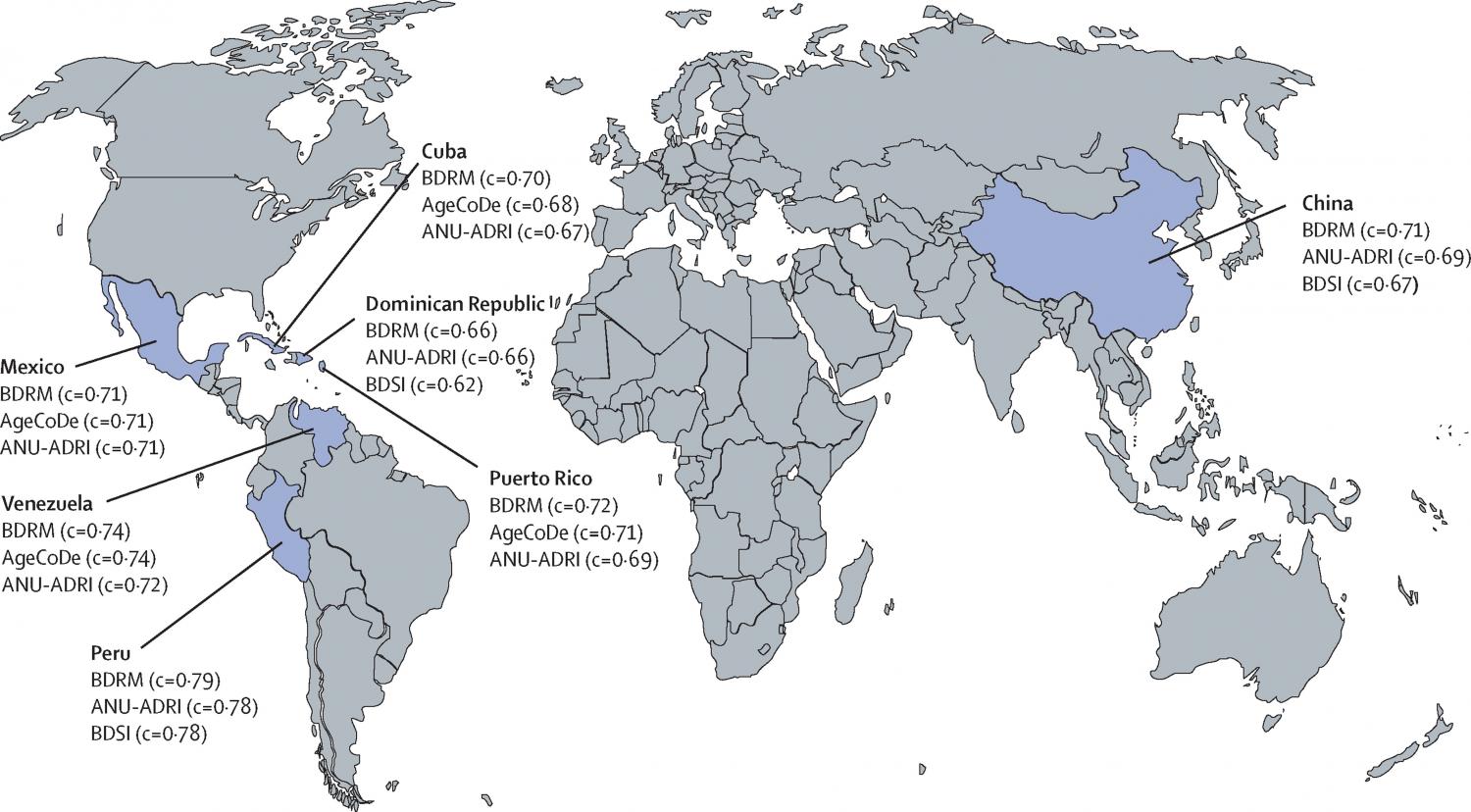
Background: To date, dementia prediction models have been exclusively developed and tested in high-income countries (HICs). However, most people with dementia live in low-income and middle-income countries (LMICs), where dementia risk prediction research is almost non-existent and the ability of current models to predict dementia is unknown. This study investigated whether dementia prediction models developed in HICs are applicable to LMICs. Methods: Data were from the 10/66 Study. Individuals aged 65 years or older and without dementia at baseline were selected from China, Cuba, the Dominican Republic, Mexico, Peru, Puerto Rico, and Venezuela. Dementia incidence was assessed over 3–5 years, with diagnosis according to the 10/66 Study diagnostic algorithm. Discrimination and calibration were tested for five models: the Cardiovascular Risk Factors, Aging and Dementia risk score (CAIDE); the Study on Aging, Cognition and Dementia (AgeCoDe) model; the Australian National University Alzheimer's Disease Risk Index (ANU-ADRI); the Brief Dementia Screening Indicator (BDSI); and the Rotterdam Study Basic Dementia Risk Model (BDRM). Models were tested with use of Cox regression. The discriminative accuracy of each model was assessed using Harrell's concordance (c)-statistic, with a value of 0·70 or higher considered to indicate acceptable discriminative ability. Calibration (model fit) was assessed statistically using the Grønnesby and Borgan test. Findings: 11 143 individuals without baseline dementia and with available follow-up data were included in the analysis. During follow-up (mean 3·8 years [SD 1·3]), 1069 people progressed to dementia across all sites (incidence rate 24·9 cases per 1000 person-years). Performance of the models varied. Across countries, the discriminative ability of the CAIDE (0·52≤c≤0·63) and AgeCoDe (0·57≤c≤0·74) models was poor. By contrast, the ANU-ADRI (0·66≤c≤0·78), BDSI (0·62≤c≤0·78), and BDRM (0·66≤c≤0·78) models showed similar levels of discriminative ability to those of the development cohorts. All models showed good calibration, especially at low and intermediate levels of predicted risk. The models validated best in Peru and poorest in the Dominican Republic and China. Interpretation: Not all dementia prediction models developed in HICs can be simply extrapolated to LMICs. Further work defining what number and which combination of risk variables works best for predicting risk of dementia in LMICs is needed. However, models that transport well could be used immediately for dementia prevention research and targeted risk reduction in LMICs. Funding: National Institute for Health Research, Wellcome Trust, WHO, US Alzheimer's Association, and European Research Council.
